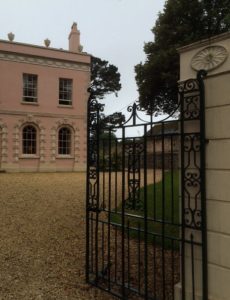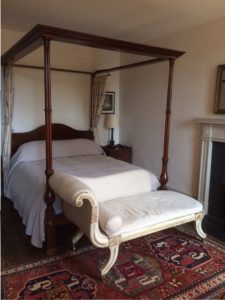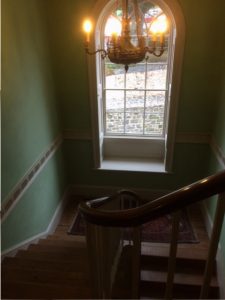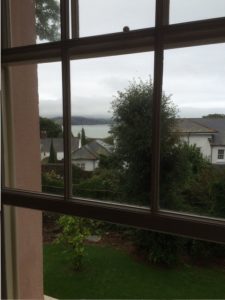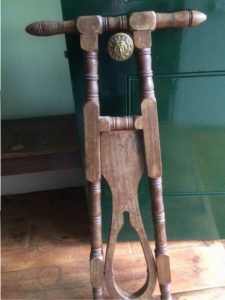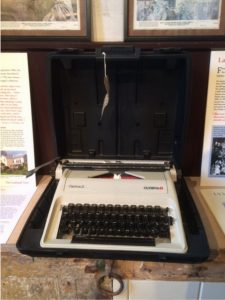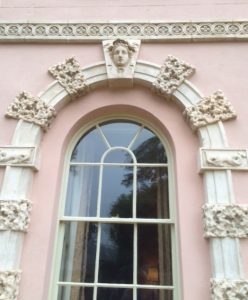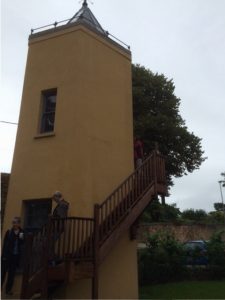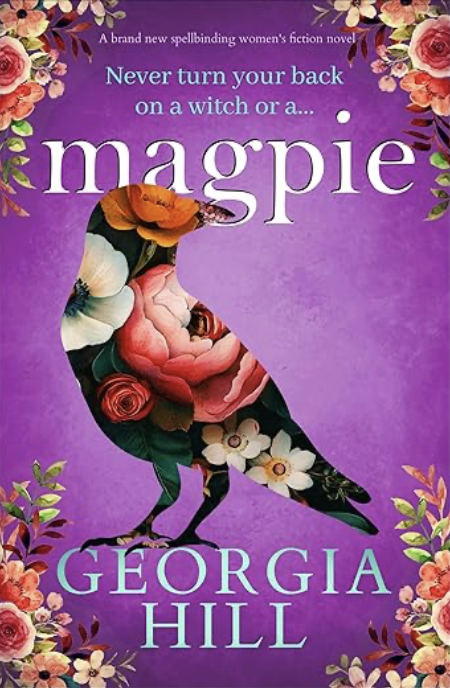I got hooked on a Channel 4 programme a while ago which featured the work of The Landmark Trust. Restoring Britain’s Landmarks introduced the workings of the trust. Its aim is to breathe life back into buildings of key historical interest and turn them into upmarket holiday lets.
One of the buildings featured in the programmes – and this is when my ears really pricked up – was Belmont House in Lyme Regis. You might remember the beautiful Regency front with its intricate carvings.
Although Belmont House isn’t usually open to the public, the trust organised open days where you can have a nose around. Happily, one of these coincided with a trip to Devon, so I went along.
It was well worth the visit. What a spot for history and literature buffs and anyone who enjoys a sea view!
Built in 1784 by Eleanor Coade (more about this remarkable woman later) it was designed as a small seaside villa and has views across Lyme’s famous Cobb sea wall and to the Jurassic Coast beyond. Even on the dull, rain-washed day I visited, the views were impressive.
It consists of several bedrooms, grand dining and drawing rooms, a modern kitchen to die for and an ornate balcony. The outside is decorated with the highly detailed Coade stone mouldings by which Eleanor Coade made her fortune.
I’ve known the house for as long as I’ve been going to Lyme. For much of that time it’s been shrouded by overgrown trees and its Regency symmetry despoiled by a more modern extension. For me it held a certain fascination as it was the home of writer John Fowles. I only came to John Fowles’ work because of his connection to Lyme Regis. I distinctly remember The French Lieutenant’s Woman being filmed in the town back in the ‘80s. I was probably too young to read the novel and fully appreciate it but I had a go anyway. It led me to The Magus – a challenging book but one which lingers in the memory.
John Fowles was born in Essex but, like many, was drawn to Lyme. I think it was his obvious joy and passion for the town which endeared me to him. He was curator of the local museum and wrote several histories about the area.
Regular readers of my blog will know I’m besotted with Lyme Regis so John Fowles gets my vote. And, of course, to a little girl with a vivid imagination, the idea of a mysterious and slightly scary writer sitting at his window, gazing over The Cobb and writing, appealed enormously.
The Landmark Trust took over Belmont from John Fowles’ widow. He was concerned it shouldn’t become a hotel and although the trust offers two free study weeks to creative writing students from the University of East Anglia, it is now primarily a holiday let. I’d love to know what John Fowles would have made of that.
There’s a display about the writer and Belmont’s other famous inhabitants set up in the stables. It includes John Fowles’ Olympia typewriter. Wonder if he named it, as Jilly Cooper does? (I believe hers is called Monica).
The house has a rich history of remarkable owners and tenants. Eleanor Coade’s factory produced a type of artificial stone which adorned many Regency buildings. As it was highly durable and suited to elaborate moulding techniques, it was extremely popular for decorative use. Although she lived and worked mostly in London, Eleanor Coade retained Belmont House and used it to show off her Coade stone sculptures. She never married and was arguably one of the most successful Regency entrepreneurs – male or female. Her Coade stone can be found on many of the more important buildings in London.
Dr Richard Bangay bought the house in 1881. He moved his family from Manchester to the south coast in a search of a healthier climate. An astonishing man, he began life as a lowly crow scarer, worked as a miner while educating himself, elevated his social standing and became a doctor! Now there’s a plot for a novel. Dr Bangay added two large gable wings, several conservatories and an observatory tower as he was a keen astronomer. The tower was open and affords spectacular views across The Cobb. It houses a modern telescope and features a roof which slides open in order to observe different parts of the night sky.
The Landmark Trust has done a remarkable job in preserving Belmont House, a truly unique building. However, bad news; if you’re hoping to book a holiday, it’s fully booked until the end of next year! Watch out for a follow up programme in the Restoring Britain’s Landmarks series to air on Channel 4 soon.
For more information, go here:
and, for a different take on the open day, visit this charming blog on days out in Devon and Dorset:
http://www.flipflopsorwellies.co.uk/
Love,
Georgia x

